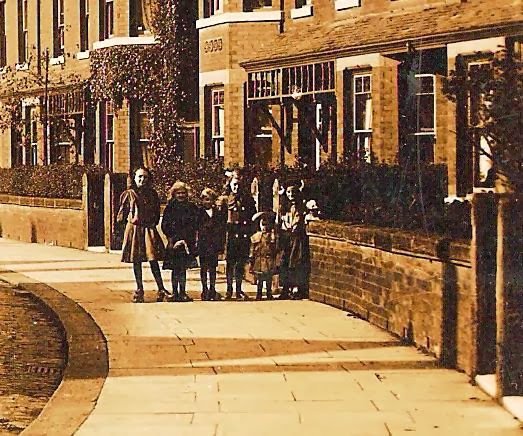What became known as “new Chorlton” but historically was Martledge is often overlooked when collections of pictures of where we live are published.
After all by the early 20th century much of the area had become rows of houses, some larger and more distinguished than others, but still just rows of houses.
The remaining interesting cottages, farmhouses, and old pubs as well as the open fields were to the south around the old village and green. So such a scene as this is unlikely capture the imagination or the curiosity of anyone looking back at the township in the past.
And yet here there is a story. It is Nicolas Road sometime between 1909 and 1914. We can be as exact as that.
The postcard of the scene was sent in 1914, but most of the right side of the road had still to be built in 1909.
What is more it is sometime in the morning. The sun is lighting up the houses on the western side of the road, and there are delivery vans in the distance. Judging by the leaves on the trees and the children posing for the camera it might even be the summer holidays.
These were the new houses for the middling families who had been steadily moving into Chorlton since the last two decades of the 19th century. So behind the doors on this western side were clerks, commercial travellers, draughtsman, engineers, and managers.
At number 18 in the spring of 1911 lived the Jackson’s. John William was 41 and a book keeper working for the railway. He had married his wife Mary in 1902 and they had one son, Frank aged 7 and also sharing the six roomed house was Mary’s widowed mother.
John was not native to Chorlton, he had been born in Salford and a decade earlier his family had been living on Keppel Road, attracted I guess by the fine new houses close to the railway station and within easy walk of the countryside.
His immediate neighbours included a signalman for the Great Central Railway, a salesman and chemist. Most had young families and none were born here.
Looking again at the picture there is a temptation to try and fit the children to the families on the road but I doubt that this is sound history.
It would be more rewarding to reflect on the Chorlton they knew and how it would change during the childhood.
Much of the land to the south was still farmland and behind them was the new brickworks. The romantic in me envies them that rural landscape with its opportunities for long summer rambles down towards the Mersey.
Then again there will be plenty who would point to the downside of life just a few years before the Great War. But that is another story.
Picture; from the Lloyd collection



No comments:
Post a Comment